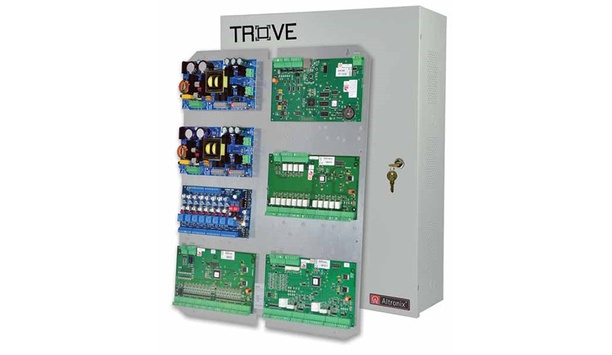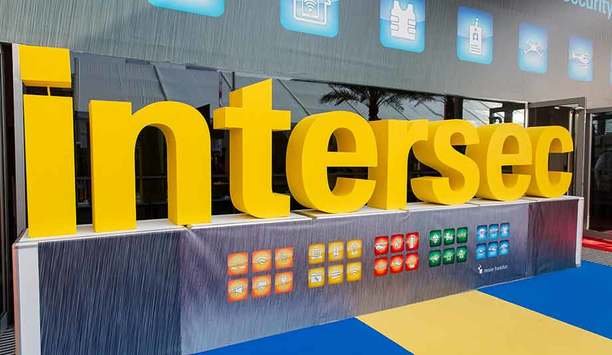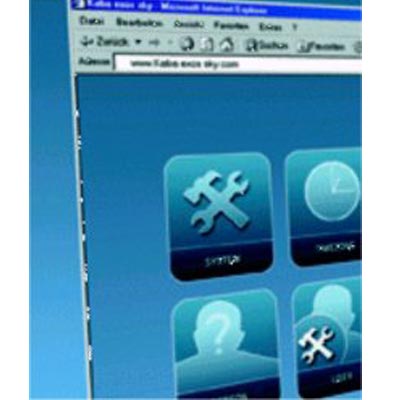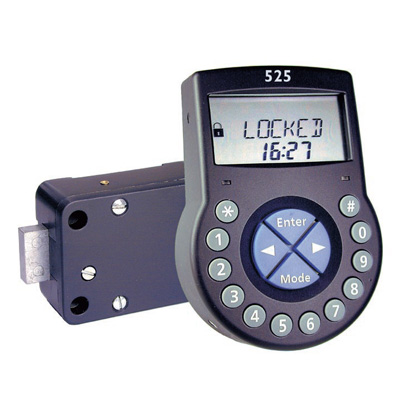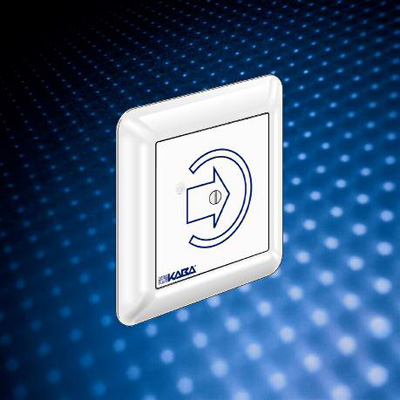Kaba - Experts & Thought Leaders
Latest Kaba news & announcements
ASIS International and the Security Industry Association (SIA) have closed out a successful second annual Security LeadHER conference, a unique event dedicated to advancing, connecting and empowering women in the security profession. The sold-out event took place June 24-25, 2024, in Phoenix, Arizona, bringing together more than 400 security professionals from seven countries. Security LeadHER 2024 builds on the tremendous success of last year’s inaugural event, gathering attendees of all backgrounds and genders. This year’s conference – a day-and-a-half program featuring industry-pioneering subject matter expert presenters – offered inspiring keynotes, educational sessions and networking opportunities. The 2024 agenda featured a diverse range of presentations and discussions addressing the unique challenges and opportunities faced by women in the security industry. Keynote presentations Event also featured multiple networking breaks, a networking lunch and a lively evening reception Session topics included the power of authenticity in leadership, addressing and overcoming imposter syndrome, managing the multigenerational workplace, fostering male allyship in the security industry, negotiation tactics and more. Additionally, attendees enjoyed motivating keynote presentations from Henna Pryor, two-time TEDx and global keynote speaker, workplace performance expert, author and executive coach at Pryority Group; Debby Stone, CEO and executive coach at Novateur Partners and Amanda McPherson, confidence coach and speaker. The event also featured multiple networking breaks, a networking lunch and a lively evening reception at The Duce, providing ample opportunities for attendees to connect with peers and industry pioneers. Security LeadHER conference “Following the tremendous success of our inaugural event, we’re thrilled to see Security LeadHER 2024 sell out with over 400 attendees from seven countries,” said Mary Gamble, Esq., MBA, CPP, chair of the ASIS Women in Security Community. “This partnership between ASIS and SIA has proven to be a catalytic force to develop and promote the success of women in the security industry and will have a positive impact for years to come.” “The second annual Security LeadHER conference was nothing short of spectacular. It was inspiring to see so many established and emerging women leaders in one room, and the energy was palpable,” said Alice DiSanto, vice president of global marketing at Rajant Corporation and chair of SIA’s Women in Security Forum. LeadHERs in security Amazing ward of “leadhers” donated to the Greater Phoenix Area by supporting Dress DiSanto added: “Our expert speakers addressed the most pressing personal and professional issues facing women in security and shared actionable tools and tactics for leadership development, collaboration and risk-taking to cultivate a bolder presence. This conference is unlike any other in our industry, and the 2024 event fostered connectedness, enriched lives and grew engagement among the ‘LeadHERs’ in security. We can’t wait to do it again next year!” As part of this year’s Security LeadHER conference, the amazing community of “leadhers” contributed to the Greater Phoenix Area by supporting Dress for Success Phoenix and the Bra Recyclers by accepting donations on-site during Security LeadHER 2024. Investment in Security LeadHER Event organisers SIA and ASIS are profoundly grateful for the generous support of the sponsors who have made Security LeadHER 2024 possible. Their commitment to advancing, connecting and empowering women in the security industry is truly commendable. These organisations are not just sponsors; they are catalysts for change in the industry, actively promoting diversity and inclusion. Their investment in Security LeadHER demonstrates a shared vision for a more equitable and dynamic security sector. Together, they are paving the way for the next generation of women pioneers in security. Sponsors include Premier Sponsors|Apple, Dorma Kaba, HID, Intel, Wesco, Executive Sponsors|Axis Communications, Salto, Securitas Technology, Partner + Bag Sponsor | Allegion, Partner Sponsors | Assa Abloy, Boon Edam, Genetec, GSA Schedules, Inc., i-Pro, Ontic and Sage Integration. Security LeadHER 2025 will be held June 9-10 in Detroit, Michigan.
Altronix, a recognised provider of power and transmission solutions for the professional security industry, is featuring its expanded offering of Trove Access and Power Integration Solutions at ASIS 2017 (booth # 2823). New additions to the Trove series include Altronix integrations with Bosch, DMP, Honeywell, Kantech and Sielox access. These new models join the versatile line of Trove solutions which accommodate AMAG, CDVI, HID/Vertx, KABA/KeyScan, Mercury and Software House access controllers. “Trove enclosures and backplanes simplify board layout and wire management, greatly reducing installation and labor costs, while providing the versatility and scalability that system designers and installers require to easily configure their systems.” said Alan Forman, President, Altronix Corporation. Enhanced performance efficiency Trove2 Access and Power Integration Solutions are designed for larger applications, allowing Altronix power/accessories combined with access controllers from the industry’s leading manfacturers to be wired and pre-tested prior to on-site installation. This reduces total cost and enhances performance efficiency. Altronix also offers the Trove1 Access and Power Integration Solution, a more compact version of the Trove2 for smaller applications which accommodate CDVI, HID/VertX and Mercury access controllers. All Trove enclosures include a cam lock, tamper switch and mounting hardware. Altronix has further simplified the product selection and configuration process by offering a free online Trove System Design Tool for configuring a access system.
Intersec Saudi Arabia 2017 is expected to host more than 100 exhibitors, including 22 launch partners Saudi Arabia and the UAE are leading the upward trend for the fire safety systems market in the Gulf Cooperation Council (GCC), as stringent government regulations fuel demand for the replacement of existing and outdated equipment. According to consultancy firm 6Wresearch, the GCC’s fire safety systems market was worth US $ 1.36 billion in 2015, with Saudi Arabia (US $ 598.4 million), and the UAE (US $ 394.4 million) comprising 73 per cent of the regional market. The other Gulf States of Bahrain, Qatar, Oman, and Kuwait accounted for US $ 367.2 million (27 per cent). Fire safety system market growth 6Wresearch said Saudi’s fire safety systems and equipment market is projected to grow six per cent annually from 2016 – 2020. By 2022, the market is estimated to be worth US $ 632.2 million, attributed to a recovery in the construction and real estate verticals. Other factors driving regional demand for new fire safety systems include government and transportation sectors, residential, retail, and hospitality verticals, while Saudi’s Vision 2030 and the upcoming Dubai Expo 2020 in the UAE is also likely to boost further growth. The latest market updates were told to more than 100 fire, safety and security industry professionals at a three-day Saudi roadshow promoting the upcoming Intersec exhibitions in Dubai and Jeddah. Intersec Dubai 2017 The first edition of IntersecSaudi Arabia meanwhile is expected to host more than100 exhibitors, including 22launch partners Intersec, the world’s leading exhibition for security, safety, and fire protection, runs from 22-24 January 2017 at the Dubai International Convention and Exhibition Centre, while Intersec Saudi Arabia will take place from 2-4 May 2017 at the Jeddah Centre for Forums & Events. In its 19th edition, Intersec 2017 will feature more than 1,300 exhibitors from 54 countries spanning over 55,000sqm of exhibition space, registering a 10 per cent growth over the previous year. Intersec Saudi Arabia 2017 The first edition of Intersec Saudi Arabia meanwhile is expected to host more than 100 exhibitors, including 22 launch partners; Al Alameya Group, Axis Communications, Bristol Fire Engineering – Corodex, the British Security Industry Association, CP Plus, Dahua, dorma + kaba, Draeger, Genetec, Hanwha Techwin, Harco Group, HID Global, Hikvision, Milestone, NAFFCO, Nedap, Pelco by Schneider Electric, Promise Technology, Smiths Detection, Tadween, NITIE, and ZMR. Fire & rescue section Fire & Rescue is one of seven show sections at Intersec 2017, and has nearly doubled in size over the last four years. The section, which attracted 350 exhibitors in 2016, is expected to continue its growth trend in 2017, having attracted the likes of Apollo, bsi, Bristol, Chemours, Fike, Hochiki, Grupo Komtes, LPCB, NAFFCO, Oshkosh, Rapidrop, Scott Safety, Securiton, SFFECO, Siemens, UL, and Velox. “Ongoing investments in the commercial, retail, industrial, hospitality, and the healthcare sectors, combined with upcoming high profile international events, means growth is the buzz word across all sectors in the GCC, and this also applies to the fire safety market,” said Ahmed Pauwels, CEO of Messe Frankfurt Middle East, the organiser of Intersec, and Intersec Saudi Arabia. “Improvements in the enforcement of fire codes in the construction sector, and the constant need for fire protection and life safety means the GCC’s fire safety market is estimated to grow annually by 14-16 per cent to reach US$3.15 billion by 2020.” "Expenditures in the MiddleEast oil and gas sector are expected to increase by morethan 19 per cent for the 5-year period ending in 2017" “This robust demand for the latest equipment, fire protection and firefighting systems is reflected in the strong growth in the Fire & Rescue section at Intersec, while Intersec Saudi Arabia too will host the biggest names in the fire protection market,” added Pauwels. Oil & gas Oil & Gas is another key sector for the fire protection industry, and will be a key target area for Hochiki at Intersec 2017. The Japanese-headquartered company specialises in commercial and industrial fire detection and emergency lighting solutions, and will showcase its latest range of fire detection products designed specifically for use in oil refineries, gas processing plants and other high risk environments. “Expenditures in the Middle East oil and gas sector are expected to increase by more than 19 per cent for the 5-year period ending in 2017,” said Robert Head, Assistant Managing Director at Hochiki Middle East. “When operating in such hazardous environments, it’s important to ensure the building’s fire safety systems are robust and reliable. There is a variety of fire detection products designed specifically for use in oil refineries, gas processing plants and other high risk environments.” “Intrinsically Safe devices (IS) restrict the electrical and thermal energy in the circuit ensuring that ignition in an explosive atmosphere cannot occur; making them ideal for use in oil and gas facilities as well as chemical engineering plants. Hochiki have a wide range of IS devices, from smoke detectors to flame detectors, which have all been certified by BASEEFA to IECEx and ATEX,” added Head. New panel & product launches Global Fire Equipment from Portugal, a manufacturer of fire detection and extinguishing systems will return to Intersec 2017 with the launch of its new panels and several other products like PA/VA systems, and web enabled interfaces. "Our goal is to establish longterm partnerships with agents working in the security fieldwith the purpose of expandingour global presence whichcovers more than 70 countries" João Paulo Ajami, the Commercial Director for Global Fire Equipment, said, “We had several interesting projects in Saudi Arabia in the last 12 months, while exhibiting at Intersec has helped us launch several good distribution channels in countries like Kenya, Saudi Arabia, the UAE, Tanzania, and Pakistan.” “Our goal is to establish long term partnerships with agents working in the security field with the purpose of expanding our global presence which covers more than 70 countries. Our systems are applied in residential, commercial and industrial sectors and its subsectors, since fire detection is applicable to almost all construction sectors.” Regional fire safety codes Elsewhere, Aman Fire Protection, an Oman-based fire protection engineering consultancy, will look to increase its business contacts at Intersec 2017 and explain the fire codes approvals process to those undertaking projects in the Middle East. Anthony Cole, Technical Director at Aman Fire Protection, highlighted the growing trend for better awareness of regional fire safety codes following recent fire incidents across the GCC. “There’s an increase in awareness for the need for review and approval of materials used in construction by fire protection consultants especially in high rise projects following the several high profile fires,” said Cole. “Oil & Gas, military, power and energy creation, large commercial developments such as shopping malls and integrated tourism leisure projects are the most important industries our business is targeting now.” Intersec’s other core sections include Commercial Security, Homeland Security & Policing, Safety & Health, Information Security, Smart Home and Physical & Perimeter Security. Save Save Save Save
Insights & Opinions from thought leaders at Kaba
2014 was a year for eye-popping merger and acquisition (M&A) activity in the security space. The big deals of the year included some of the largest names in the industry. One name is larger than any in the security market – Google, which made not one but two acquisitions this year that could impact the future security market. It was also the year that a smaller player in the video camera market (although a huge familiar brand overall) bought a large, open systems VMS company (to almost everyone’s surprise). There was major activity on both sides of the Atlantic, impacting a wide range of industry sectors, from video to access control to home security. It was a year for acquisition and reinvention, for mergers and management refocus. And it was the year that Samsung stopped owning Samsung Techwin. Let’s take a look at the Top 10 M&A stories of 2014 … 1. Canon Acquires Milestone When Canon, a fairly small player in the video surveillance market, announced plans for its European subsidiary to buy open systems company Milestone Systems, it sent shock waves through the market. Obviously Canon is signalling its intent to become a larger player in surveillance, but what does the move mean for the long-term viability of Milestone’s open systems approach? Can an open systems company be owned by a camera company and keep its business approach intact? Yes, according to the Milestone announcement: “Canon respects how we built our business with our partners and supports our strategy of providing open platform solutions.” 2. Vanderbilt Acquires Siemens' Security Products Siemens’ Security Products is well known in Europe, including familiar and established brands such as Bewator and Cotag in access control and Alarmcom and Europlex in the intrusion alarm sector. But who is Vanderbilt Industries? It's a fairly new U.S. company created around the acquisition in 2012 of the Schlage Security Management Systems (SMS) access control product line from Ingersoll Rand. The Siemens acquisition makes them instantly a global player. The move expands the global reach of Vanderbilt’s parent company, ACRE Ltd., and greatly enhances its technology capabilities and product portfolio. 3. Avigilon Acquires VideoIQ 2014 began with news that HD surveillance company Avigilon Corp. had agreed to buy video analytics company VideoIQ for cash consideration of $32 million. Avigilon moved quickly to incorporate VideoIQ's technology into its product line, highlighting video analytics (including the Rialto analytics appliances) along with other technologies at ISC West, IFSEC and trade shows throughout the year. Avigilon is positioning its "adaptive" analytics as a way to simplify total system operation, delivering only the information an end user needs rather than a flood of video images. 2014 saw major activity on both sides of the Atlantic, impacting a wide range of industry sectors, from video to access control to home security 4. HID Global Acquires Lumidigm HID Global is an undisputed worldwide leader in secure identity solutions, so it was big news when HID acquired a biometrics company in February. More accustomed to interfacing with biometrics technologies than owning them, HID’s acquisition of Lumidigm reflects a high level of confidence in the company’s multispectral imaging technology, which uses multiple light spectrums and advanced polarisation techniques to extract unique fingerprint characteristics from both the surface and subsurface of the skin. The system can authenticate identities with a high degree of certainty (and even in non-ideal environments where fingers can get dirty or greasy.) 5. Vicon and IQinVision Merge Vicon Industries and IQinVision announced a merger agreement in the spring to create a global provider of integrated solutions to the video security market. Vicon has long been known for designing and producing (mostly proprietary) video security and surveillance systems. IQinVision designs and produces high performance HD megapixel IP cameras. There are high hopes for the combined company, including continuing a camera line branded IQinVision and transitioning to an open systems approach with an emphasis on extracting business information from video streams. 6. Anixter Acquires Tri-Ed It was a milestone for Anixter International, the largest acquisition in the global distributor’s 57-year history. When Anixter bought Tri-Ed for $420 million, the acquiring company emphasised the opportunity to accelerate implementation of IP video and access control by the new Tri-Ed customer base, previously more focused on analogue. Tri-Ed, independent distributor of security and low-voltage technology products, sells 110,000 different products to 2,000 active dealers and integrators through 61 branches and two technical sales centres located throughout North America. Anixter is a global distributor of communications and security products, electrical and electronic wire and cable, fasteners and other small components. 7. Google Acquires Nest Labs It makes headlines when Google does anything, and Google’s entry into the home systems market is no different. Therefore, everyone noticed when Google acquired Nest Labs, a designer and manufacturer of sensor-driven, Wi-Fi-enabled, self-learning, programmable thermostats and smoke detectors. Many observers saw the $3.2 billion transaction as providing a critical foothold into the home systems market. Announced in January and closed the following month, the acquisition set the stage for another acquisition that would serve as further evidence of Google’s intent to be a dominant player in the home systems market ... The big deals of 2014 included some of the largest names in the industry 8. Nest Labs Acquires Dropcam Google-owned Nest Labs, Inc announced that it had entered into an agreement to buy Dropcam for $555 million in cash, subject to adjustments. DropCam provides do-it-yourself IP video cameras for the home environment – and another foothold for Google. 9. Kaba Holding Acquires Keyscan Emblematic of the continuing consolidation in the access control market was acquisition of Keyscan Inc., a Canadian provider of networked access control solutions, by Kaba Holding AG, based in Switzerland. The Keyscan brand presence will be maintained, operating as a separate division of Kaba’s ADS Americas Group. 10. Hanhwa To Buy Largest Interest in Samsung Techwin When Samsung sells its interest in Samsung Techwin, it’s bound to be news, even as the company’s management insists everything is business as usual. It was just a stock transaction (they say), and Samsung Techwin (which was always separate from the larger Samsung Electronics) will continue on its successful course in the video surveillance market. Korean conglomerate Hanwha Holdings announced in late November its 32.4 percent ownership in the video surveillance company (as part of a larger sale of Samsung Techwin’s defence and chemical affiliates). What about the Samsung name? Management assures the market the valuable and well-known brand will remain intact. See the full coverage of 2014/2015 Review and Forecast articles here
Ulrich Wydler of Kaba discusses how recent technological developments along with increasing demand for compatible components and total solutions, have led to the development of total channel management, which challenges the traditional supplier and distribution channels.The markets for mechanical locks, electronic access control and data collection solutions have historically developed separately. This applies to suppliers as well as their distribution channels. Locking systems made by renowned manufacturers are usually installed and maintained by independent local locksmiths, electronic access control systems are supplied directly by the manufacturer or through specialised installers, while data collection solutions (for time and attendance, operational data) are the domain of software houses who offer total solutions in partnership with terminal manufacturers.However, recent technological developments are upsetting the current supply arrangement. Lock makers now also develop mechatronic and digital access control systems, offering enhanced security and flexibility through compatibility with mechanical locking systems. These devices function with the same technology, based on a licensed contactless RFID (radio-frequency identification) medium with segmented memory space.One application example is, a firm's employees can use the same identification device such as ID cards or mechatronic keys (smart keys) for authorisation to access offices, plants and storage rooms, to pay at canteens, vending machines and petrol stations, and to identify themselves for time-and-attendance and operational data collection purposes. The availability of the unlimited technological solutions and the ever rising cost of building maintenance and IT systems have led to an increasing demand for flexible access control products that are compatible with data collection solutions. From a system administrator point of view, modern technology enables personnel data to be entered only once into the system and used for all authorisations. Moreover, all physical entrances and locks can be secured as part of the same access control system using the same application software. An integrated alarm management module manages all alarms with a single terminal, and the CCTV system corresponds with the access control systems automatically. The integration possibilities are endless. The increasing demand for compatible components and total solutions is the logical outcome of these developments. But will customers forego the services of a local locksmith? Must they limit themselves to the supply spectrum of the total solution provider? And will they have to do without the customised software solution?No. Customers can continue buying products and services through their preferred channels: The locking system through the local locksmith, the electronic access control system through the specialists and the software solution through software houses. Or they can buy the whole package directly from the total solution provider. The decision is with the customer.The magic words ‘channel management' make this concept possible. A total solution provider that has mastered all applications technologically organises the distribution of compatible modules and solutions through the relevant channels. At the same time, the company offers integration services directly or through a third party integrator. Customers gain the maximum benefit with this concept: The all-embracing offering, the local service, the individual software solution and the competent integration service. Where in addition, the total solution provider guarantees future proofing and scalability / compatibility of associated products for retrofit as well as upgrade purposes, (Kaba calls this ‘horizontal compatibility'), the customer benefits from the ultimate investment protection.Kaba, a leader in access control and data collection technologies has set up a distribution network that realises just this concept throughout Europe starting July 1, 2006. Ulrich WydlerChief Operating OfficerKaba, Access Systems Europe
Using artificial intelligence (AI) to automate physical security systems
DownloadA modern guide to data loss prevention
Download7 proven solutions for law enforcement key control and asset management
DownloadThe truth behind 9 mobile access myths
DownloadAccess control system planning phase 2
Download





